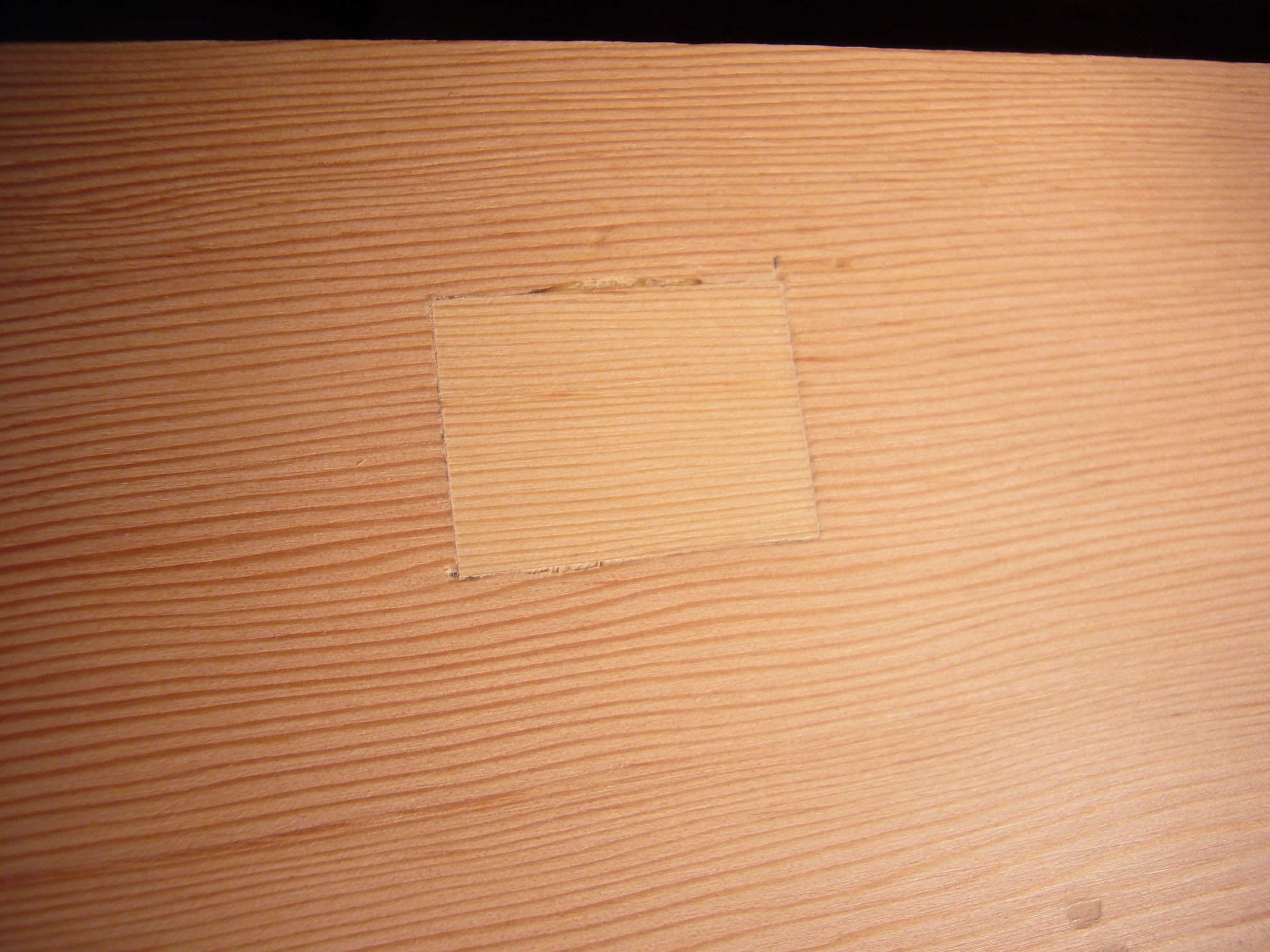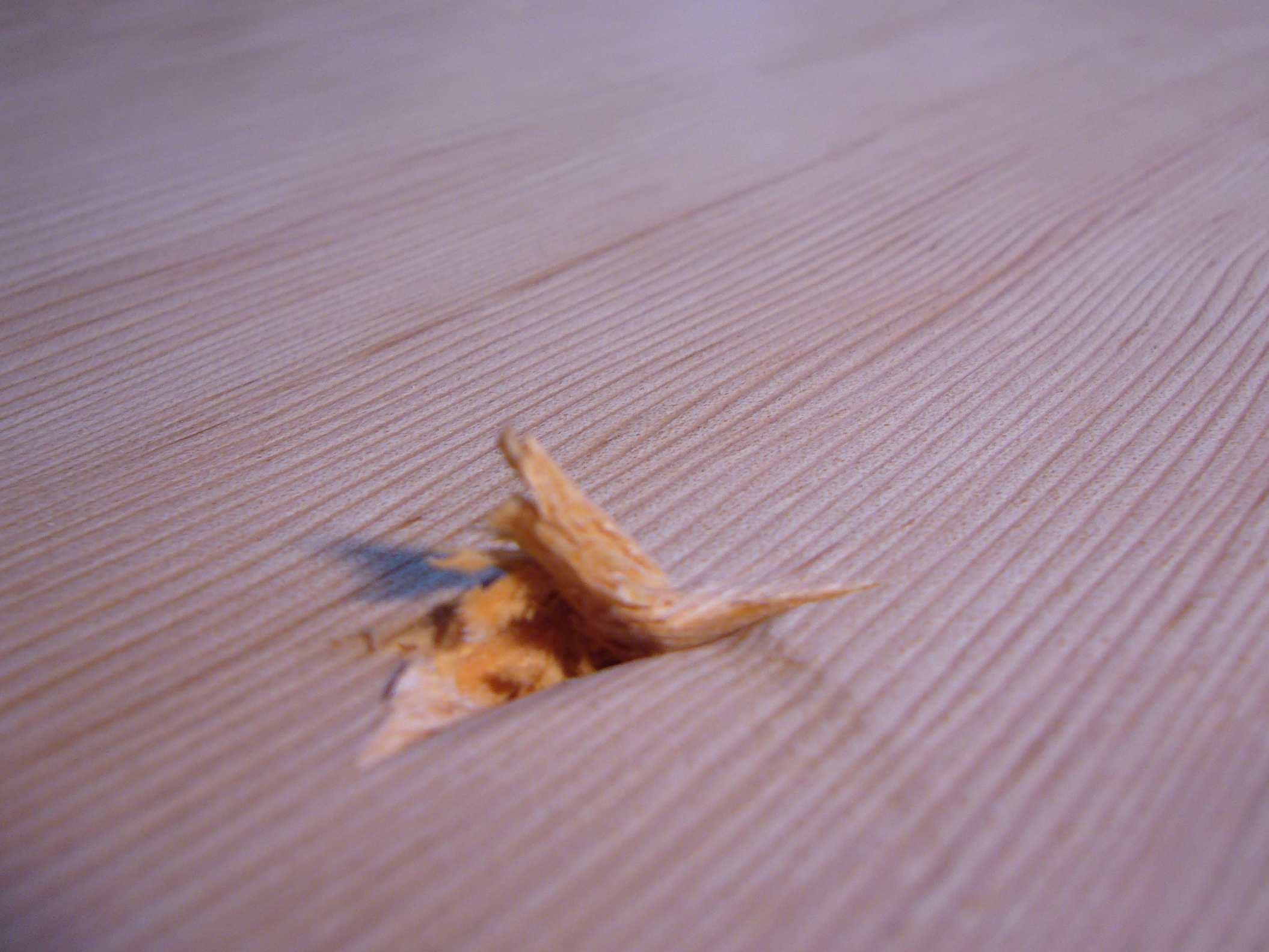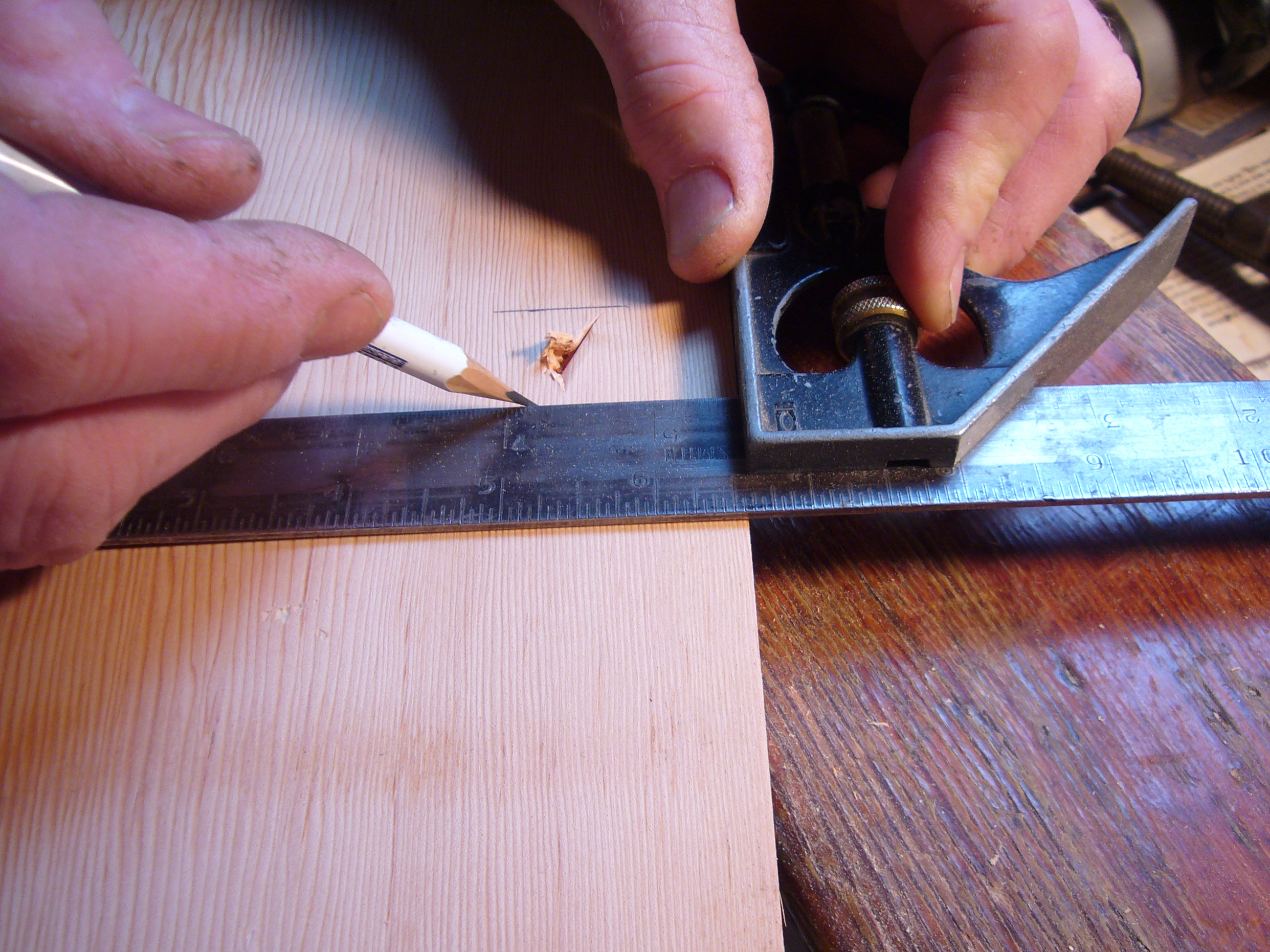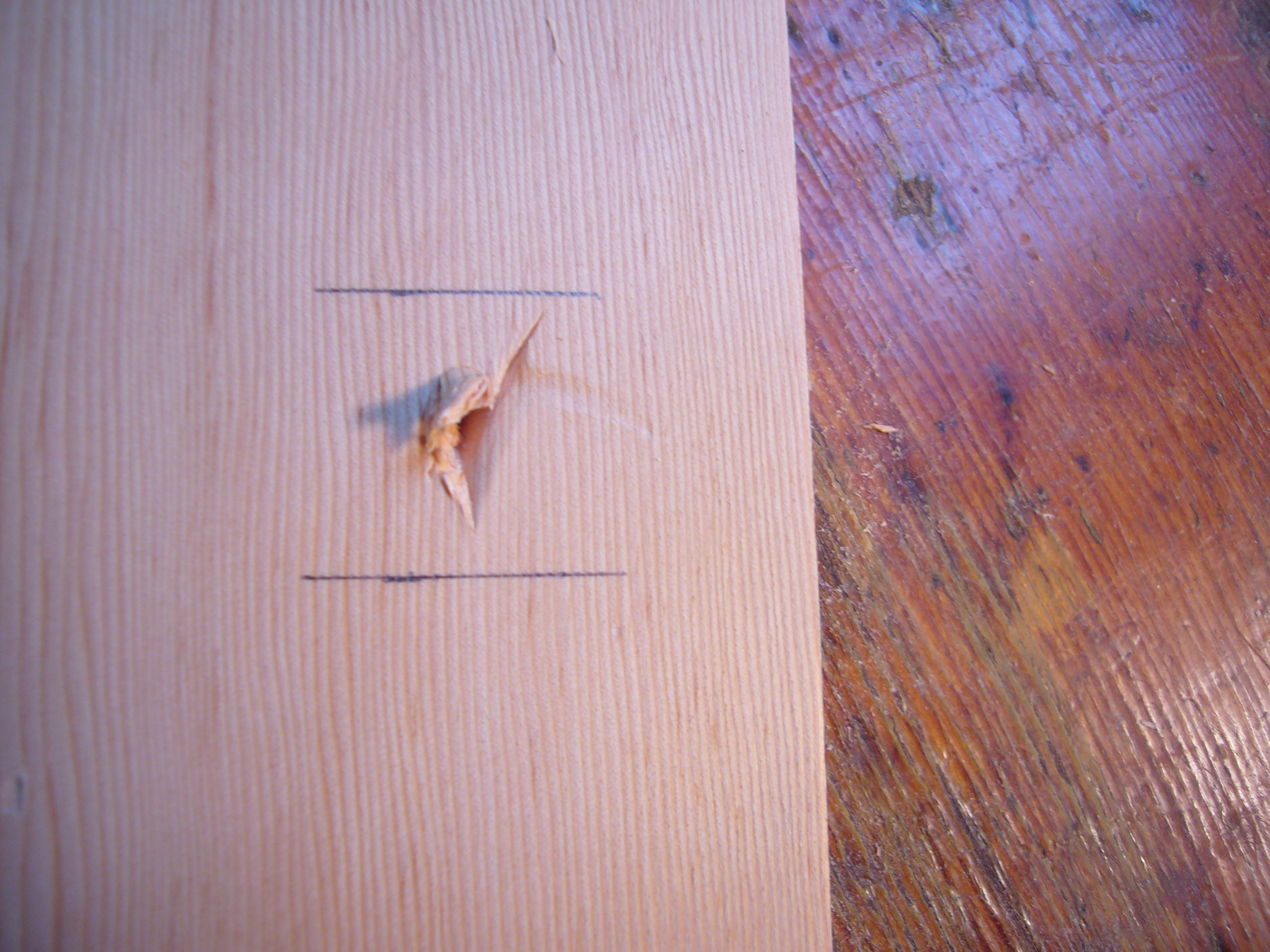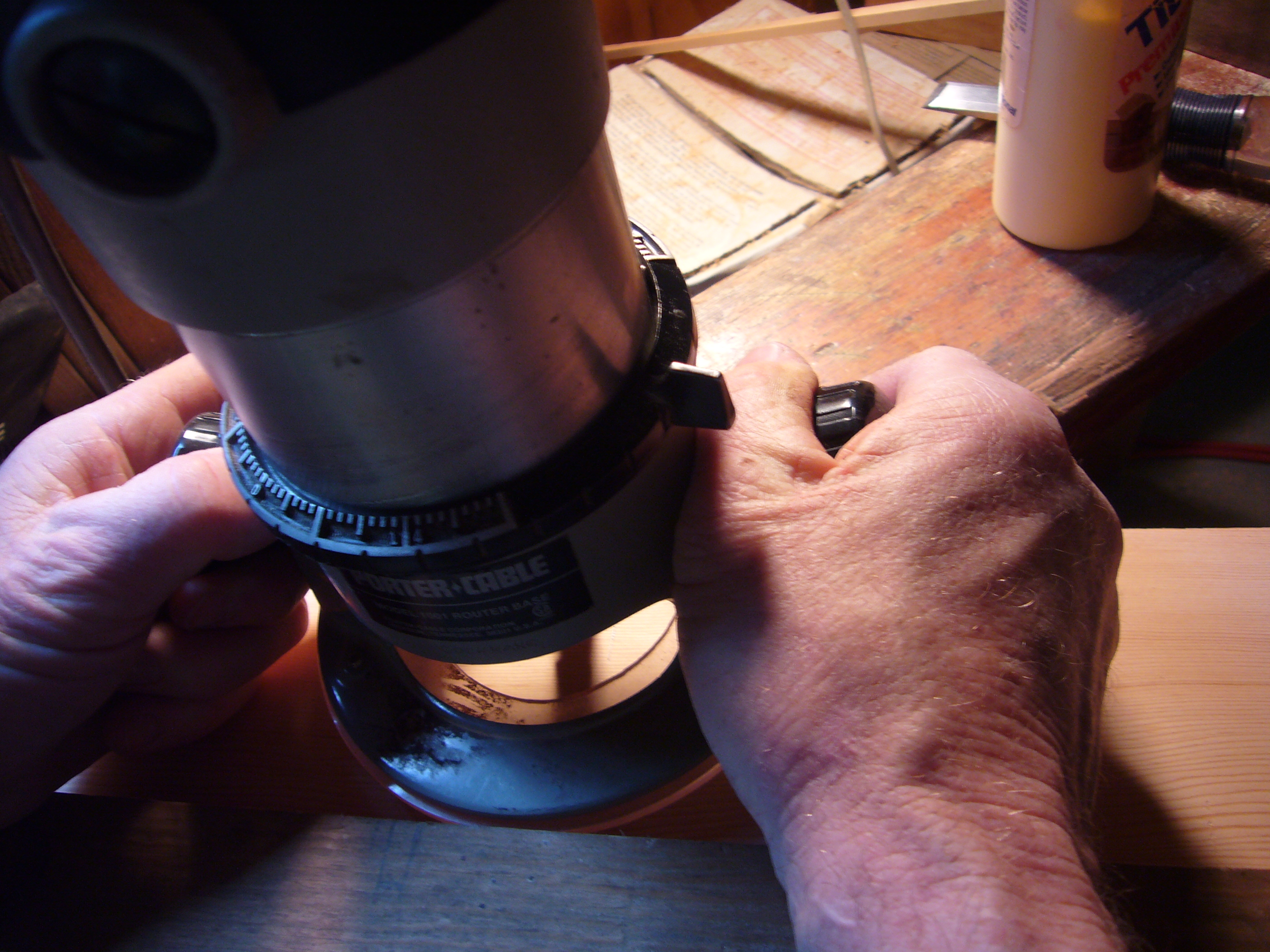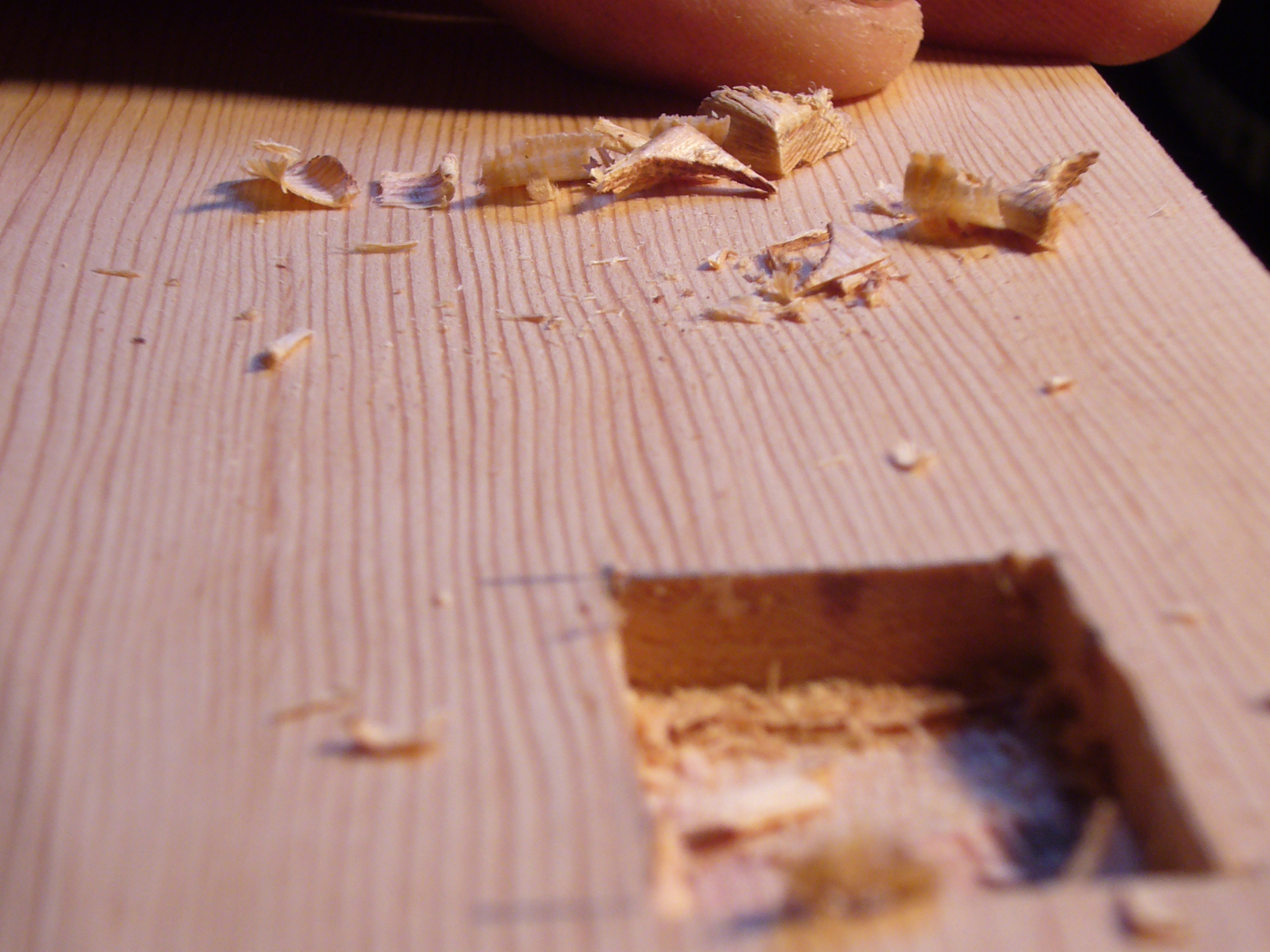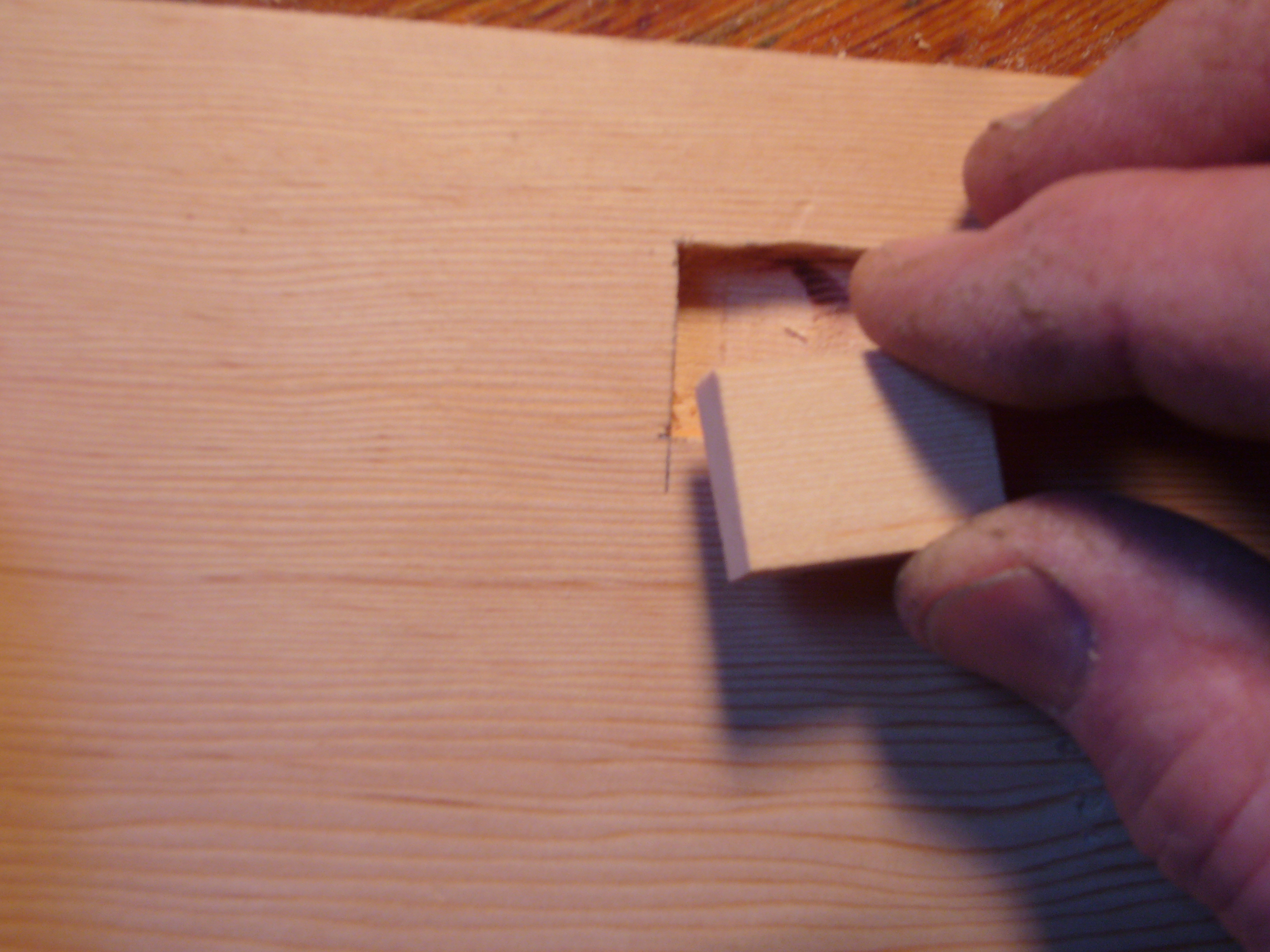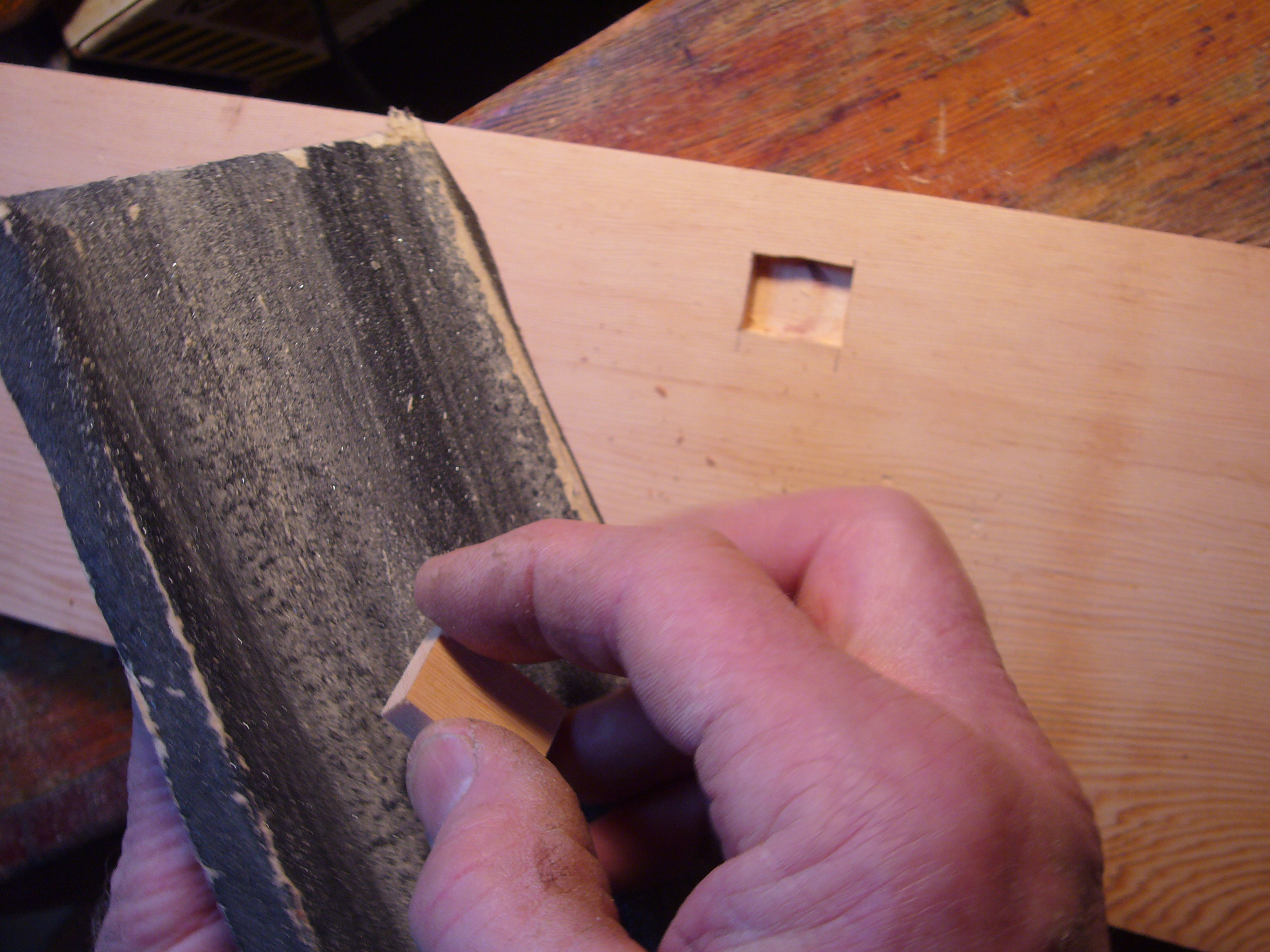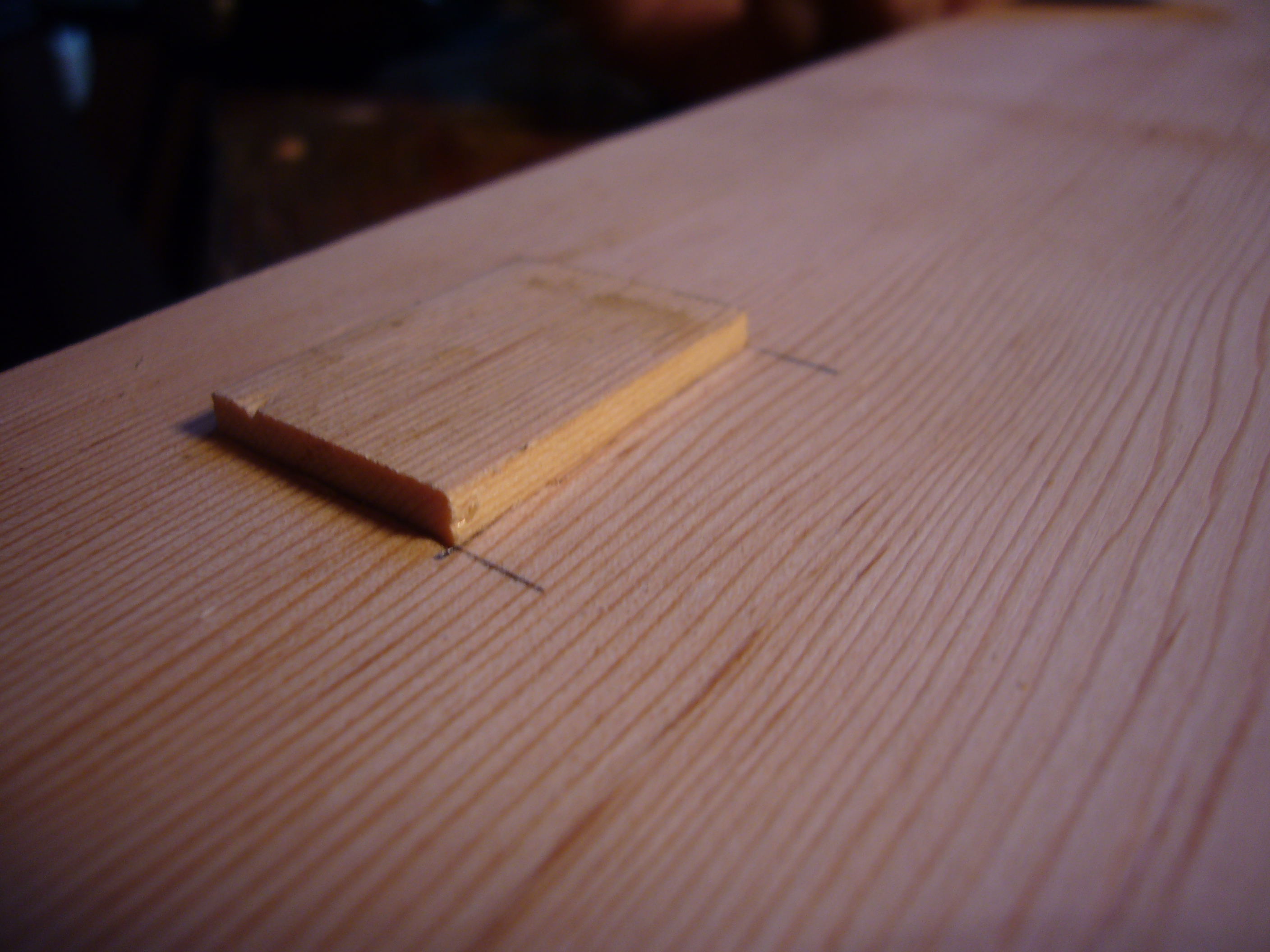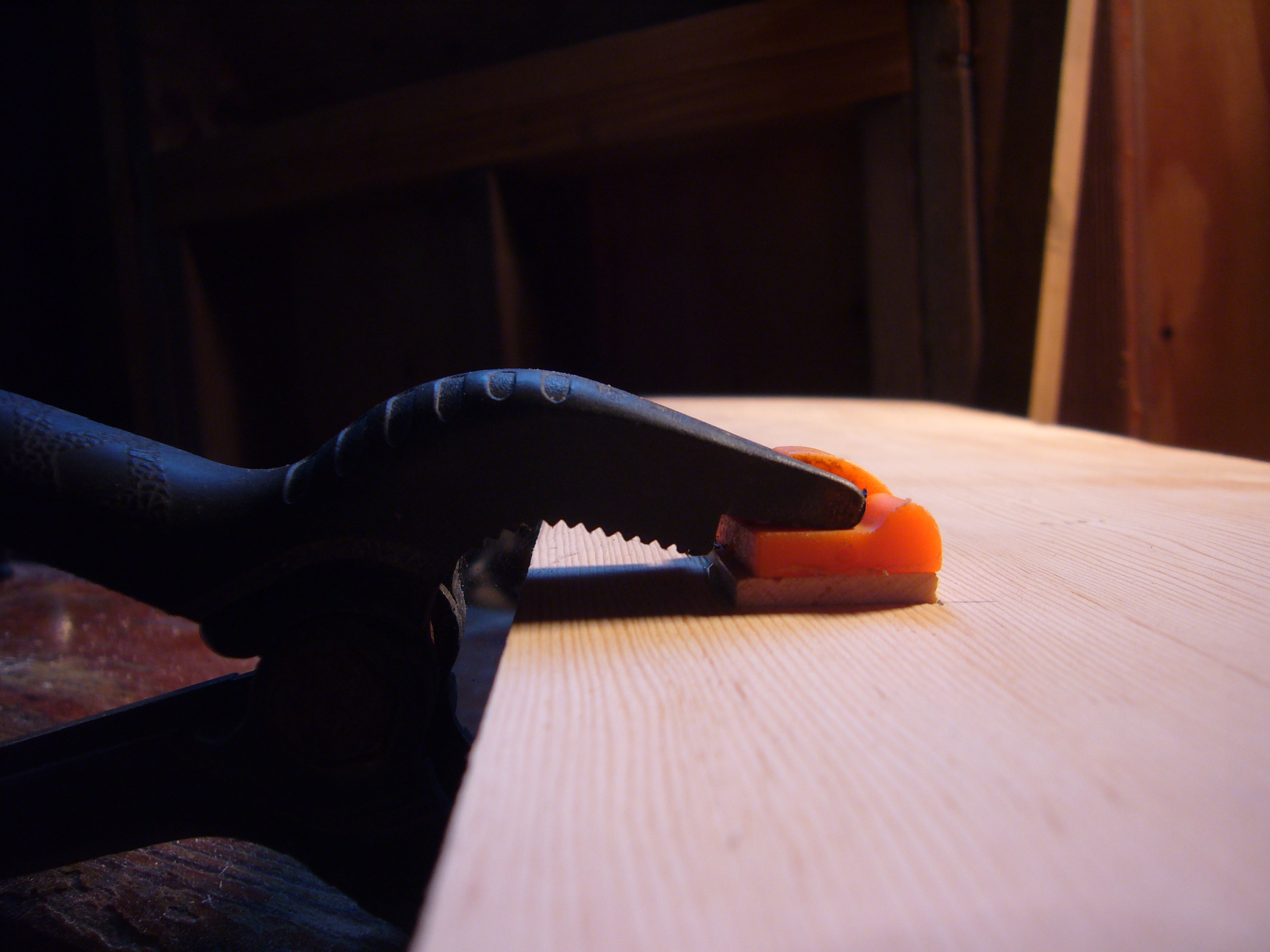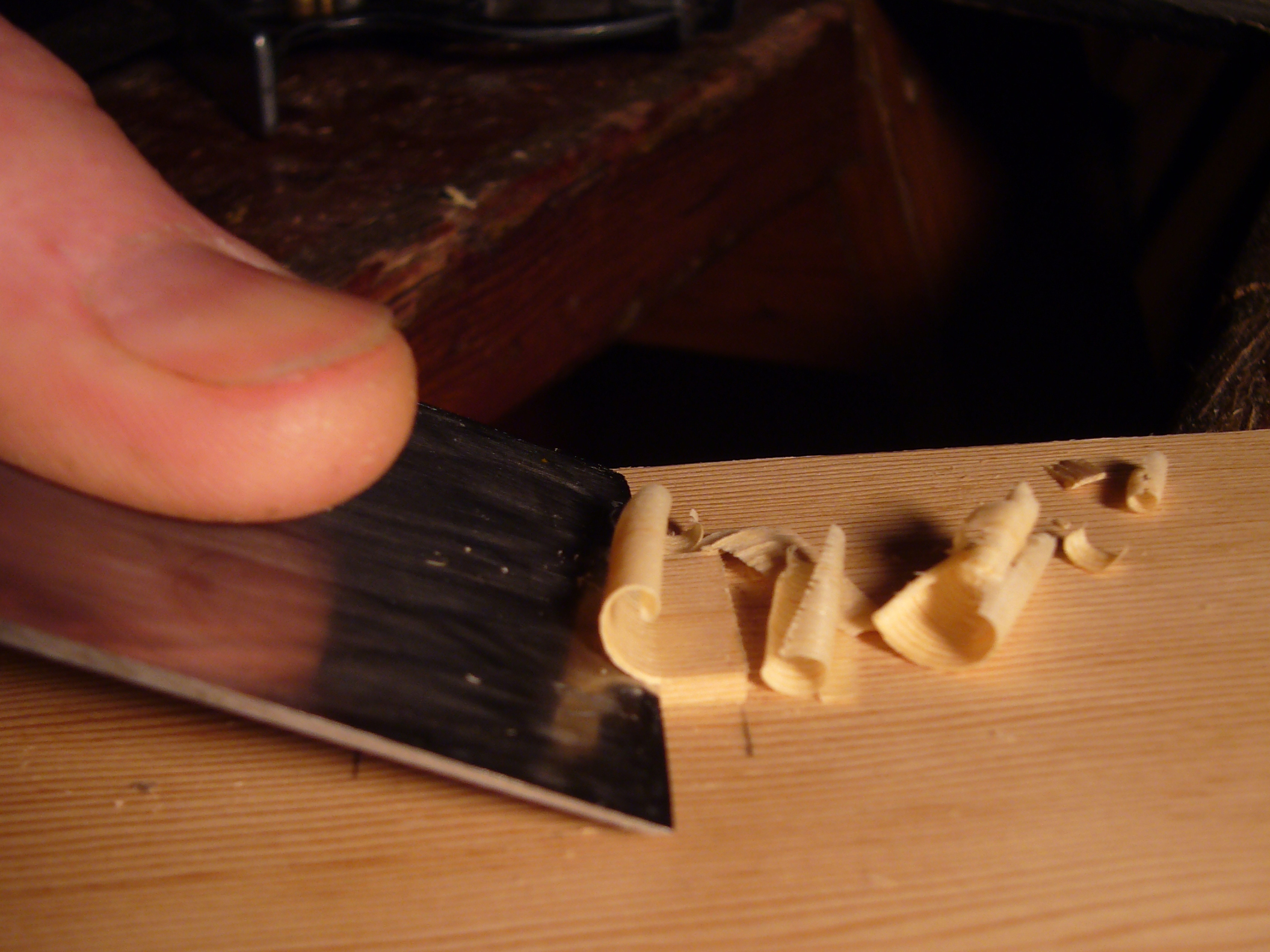A Dutchman is a wood patch or filler which replaces a damaged or missing area of any wood object. The procedure involves removing a symmetrical, squared area around the defect and replacing it with new wood. It is best to use wood of the same species, grain pattern and color as the original. An ideal Dutchman repair would use a piece of the damaged board for the patch.
Since sharp woodworking tools are involved, use extreme caution and care. A Dutchman repair is best made by an experienced woodworker.


